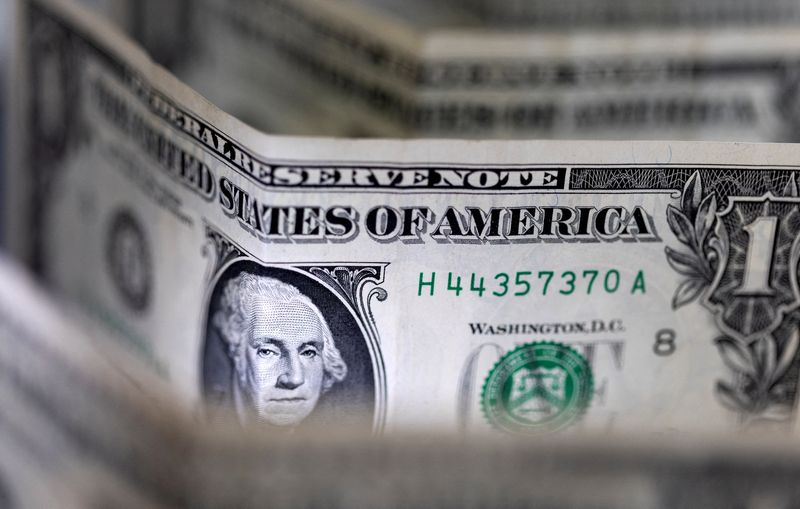
At 04:00 ET (09:00 GMT), the Dollar Index, which tracks the greenback against a basket of six other currencies, traded 0.1% lower at 105.710, near its highest levels since early November, having climbed 1.7% last week, its biggest weekly gain since September 2022.
The dollar has seen some profit-taking early Monday, but still remains in demand after the Iranian strike on Israel over the weekend increased safe haven demand, amid fears of a wider regional conflict on top of the war between Israel and Hamas in Gaza.
“With Western allies urging restraint, the market is taking the position that the Netanyahu government will avoid the more aggressive and escalatory responses of a direct attack on Iranian military or nuclear facilities,” analysts at ING said, in a note..
“Yet it looks too early to conclude that Middle East tension has found some kind of new equilibrium, and we suspect implied FX volatility will stay better bid for some time,” ING added. “The episode also serves as a reminder that the dollar is the best safe-haven currency right now—offering liquidity, high yields, and protection from US energy independence.”
The greenback had also benefited last week from the release of the hotter-than-expected CPI release, which raised expectations that the Fed will need to leave interest rates at current levels for longer to avoid a potential resurgence of inflation.
Investors are currently pricing in just 50 basis points of interest rate cuts in 2024, a sharp drop from the 150 basis points priced in at the start of the year.
Retail sales data for March are due later in the session, with the monthly figure seen rising 0.4%, a slowing in growth from the 0.6% seen the prior month.
“After last week’s high US inflation data it is doubtful that any kind of weakness in retail sales data today can substantially move the needle on expectations for the Fed this year,” ING added.
In Europe, EUR/USD rose 0.2% to 1.0659, but not far from the five-month low of 1.0622 reached on Friday.
Dovish comments from a number of European Central Bank officials have pointed to a rate cut in June, likely before the Fed starts its rate-cutting cycle.
Eurozone inflation currently resides just above the ECB’s 2.0% medium-term target, but in the bloc is very weak, considerably below the levels seen across the pond.
Data released earlier Monday showed that eurozone industrial production climbed 0.8% on the month in February, but this still represented an annual fall of 6.4%.
GBP/USD rose 0.3% to 1.2487, with sterling recovering slightly after recording last week its largest weekly percentage drop since mid-July.
This week sees the release of U.K. unemployment data on Tuesday and the latest consumer prices the following day.
“Given that market pricing for a June BoE rate cut is just 31%, conversely, any downside surprise on wages or services data could hit sterling quite hard,” ING said.
USD/JPY rose 0.3% to 153.81, just below the 34-year high seen earlier in the session.
This yen weakness has traders on guard for any potential intervention in currency markets by the Japanese government, following repeated warnings from government officials in recent weeks.
USD/CNY edged higher to 7.2386, largely treading water after the People’s Bank kept medium-term lending rates unchanged.
To read the full article, Click Here
